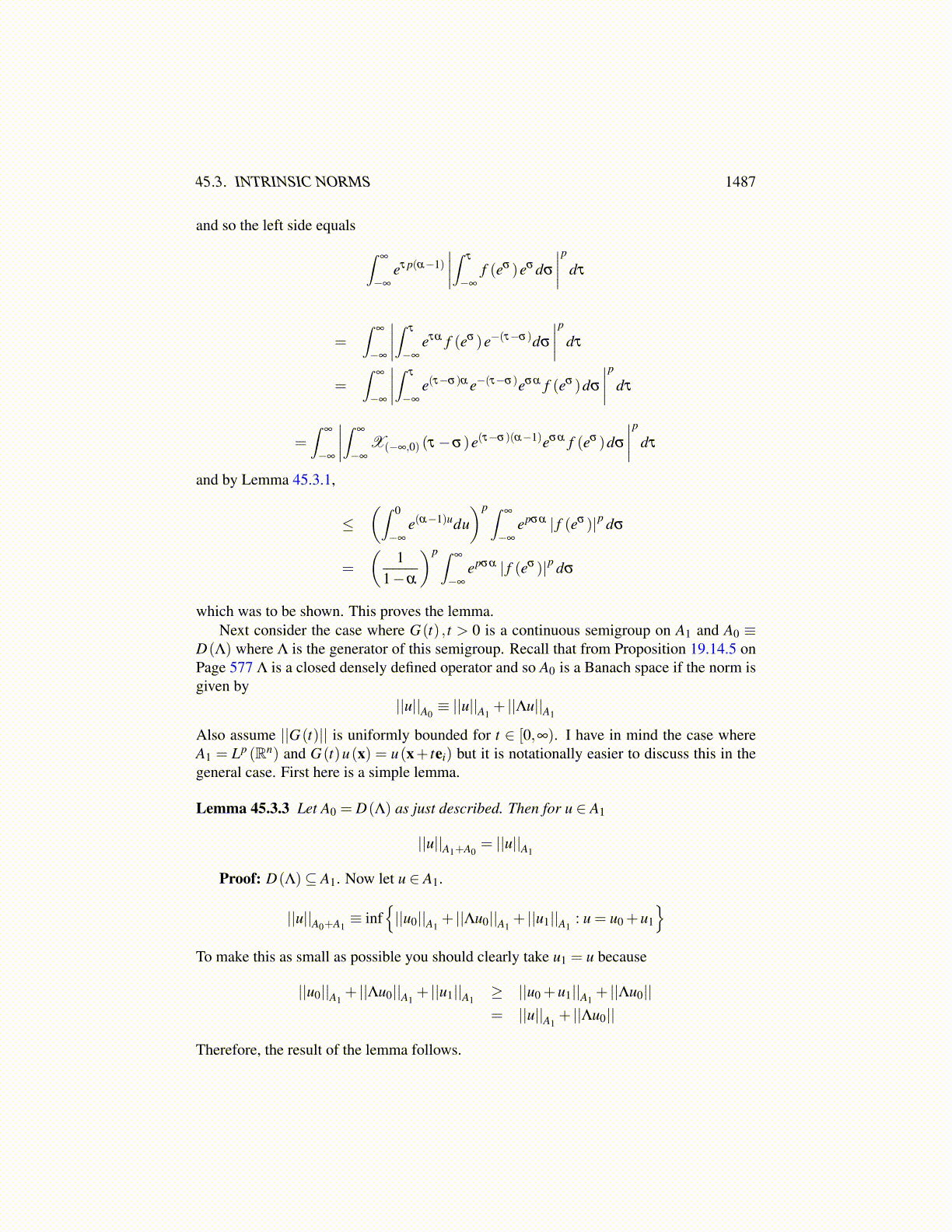
45.3. INTRINSIC NORMS 1487
Now we change variables, letting t = ψ (xn) . This yields
=C (φ)∫
B(0,1)
(∫ 1
0
∫Rn−1
∣∣t f(x′+ xnz′, t
)∣∣p dx′dt)1/p
dz′ ≤C (φ) || f ||0,p,Rn+. (45.2.4)
Now we consider the second term on the right in 45.2.3. Using the same arguments whichwere used on the first term involving Minkowski’s inequality and changing the variables,we obtain the second term
≤ C (φ)∫
B(0,1)
∫ 1
0
(∫ 1
0
∫Rn−1
∣∣∣(ψ f ),n(x′+ xnz′, t
)∣∣∣p dx′dxn
)1/p
dtdy′
≤ C (φ) || f ||1,p,Rn+. (45.2.5)
It is somewhat easier to verify that∣∣∣∣Rg, j∣∣∣∣
0,p,Rn+≤C (φ) || f ||1,p,Rn
+.
Therefore, we have shown that whenever γ f = f (0) = g,
||Rg||1,p,Rn+≤C (φ) || f ||1,p,Rn
+.
Taking the infimum over all such f and using the definition of the norm in
W 1− 1p ,p(Rn−1) ,
it follows||Rg||1,p,Rn
+≤C (φ) ||g||1− 1
p ,p,Rn−1,
showing that this map, R, is continuous as claimed. It is obvious that
limxn→0
Rg(xn) = g,
the convergence taking place in Lp(Rn−1
)because of general results about convolution
with mollifiers. This proves the lemma.
45.3 Intrinsic NormsThe above presentation is very abstract, involving the trace of a function in
W (A0,A1, p,θ)
and a norm which was the infimum of norms of functions in W which have trace equal tothe given function. It is very useful to have a description of the norm in these fractionalorder spaces which is defined in terms of the function itself rather than functions whichhave the given function as trace. This leads to something called an intrinsic norm. I amfollowing Adams [1].
The following interesting lemma is called Young’s inequality. It holds more generallythan stated.